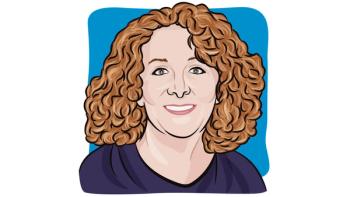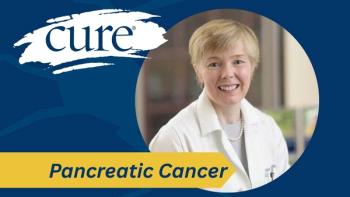
Potential Biomarker Found for Neuroendocrine Tumors, Neuroblastoma
Patients with neuroendocrine tumors or neuroblastoma could be treated with a different approach based on a protein that may be a potential biomarker.
A specific protein could be a potential biomarker and treatment target for patients with aggressive neuroendocrine tumors, according to a recent news release.
Neuroendocrine tumors begin in neuroendocrine cells, which are similar to nerve cells and hormone-producing cells, according to the Mayo Clinic. These types of tumors are considered rare and can form anywhere in the body, although they mostly occur in the lungs, appendix, small intestine, rectum and pancreas, the institution stated.
Researchers from UCLA Health Jonsson Comprehensive Cancer Center have found that the protein called UCHL1 could help doctors with providing diagnoses, prediction and evaluating responses to treatment, specifically in highly aggressive neuroendocrine tumors and neuroblastoma. Their study was recently published in the journal, Cell Reports Medicine.
Neuroblastoma often begins in early forms of nerve cells in embryos, the American Cancer Society notes, and thus commonly occurs in infants and young children. The type of cancer starts when the body’s cells grow out of control and overcrowd normal cells, which could affect anywhere in the body and could potentially spread.
Treating these particular cancers with a UCHL1 inhibitor as a monotherapy or in combination with chemotherapy has demonstrated significantly delayed growth and spread based on pre-clinical models, the researchers found.
The goal of this research was to continue guiding the development and lay the foundation for future clinical trials to test the UCHL1 inhibitor as a new treatment option, which may potentially reduce deaths related to aggressive neuroendocrine tumors and neuroblastoma, the news release noted.
“Our study demonstrates the therapeutic potential of targeting UCHL1 and its utility as a detection tool in neuroendocrine carcinomas and neuroblastoma in pre-clinical models creating a critical translational link between the study and the diagnosis and treatment of patients with these malignancies,” senior author of the study, Dr. Tanya Stoyanova, said in the news release. Stoyanova is an associate professor of molecular and medical pharmacology and urology at the David Geffen School of Medicine at UCLA.
Researchers analyzed previous data regarding UCHL1 and determined that the protein was among the top druggable proteins, which helped them identify which protein could be targeted with a drug to treat neuroendocrine tumors and neuroblastoma, according to the news release.
In the study, researchers also tested the UCHL1 levels from tissues in patients with neuroendocrine prostate cancer, lung carcinoid, small cell lung cancer, neuroblastoma and other neuroendocrine neoplasms.
The higher expression of UCHL1 in these particular tumors helped the researchers determine that UCHL1 could be a common target for drug development, the news release reported. This finding was established after comparing UCHL1 levels from tissues to non-neuroendocrine tissues.
Common current treatments for neuroendocrine tumors, according to the Mayo Clinic, include (but are not limited to) surgery, chemotherapy, radiation therapy and targeted drug therapy. The institution noted that other treatments may be available to patients, depending on their situation and the type of neuroendocrine tumor they have.
“In addition, we also revealed a detailed mechanism of action of UCHL1 and its role in regulating protein stability and nuclear import of proteins that regulate gene expression,” said first author Dr. Shiqin (Laura) Liu, a postdoctoral fellow in Stoyanova’s laboratory, in the news release.
For more news on cancer updates, research and education, don’t forget to





